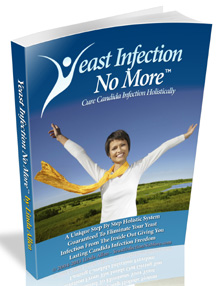How to Diagnose and Relieve A Candida Albicans Intestinal Yeast Infection
Free Video Reveals 1 Weird Tip To Quickly Cure Your Candida Overgrowth & Enjoy Permanent Freedom From Yeast Infections In As Little As 12 Hours - Guaranteed!
>> Yeast Infection Guaranteed Treatment Click Here <<
A Candida Albicans intestinal yeast infection is caused by a fungal organism which, it is believed, is present in everybody's gastrointestinal (GI) tract no matter what their age, how healthy they are or their gender.
Candida Albicans is the most common type of candida fungus/ mold, and all healthy people are immune to candida albicans. In fact, for many years a solution containing candida albicans has been injected just under the skin as a way of checking for a normal healthy immune response or for any obvious abnormalities.
The most common types of Candida Albicans are those which cause either a vaginal yeast infection in women or oral thrush which can infect anyone including young babies.
In a normal healthy host, candida present in the gut is kept under control by both the body's immune system and the friendly bacteria (probiotics) that are found in the intestinal tract.
However, problems start to occur when the Candida Albicans is allowed to colonize, multiplying and causing many of the symptoms associated with a candida infection, which range from stomach irritation to more severe even life threatening symptoms.
This can happen due to a number of reasons:
The levels of friendly bacteria in the GI tract have been reduced below a healthy amount often due to taking prescribed or non-prescribed medication for an extended period of time. This then compromises the body?s natural ability to keep the candida albicans from multiplying. If a person has been taking a long course of antibiotics then it is worth keeping a close watch for any yeast infections.
A poor immune system, either through medication or through illness, can allow the candida albicans to thrive and spread. Candida infections are not unusual in HIV patients or in people who have been treated with Chemotherapy. Also a persons lifestyle can impact on their immune system, especially if they have stressful jobs or ongoing stressful personal situations.
Also, a poor diet has been attributed to an increased risk of a candida infection. This is particularly true of diets that are high in sugar.
Unfortunately as it grows the Candida Albicans can change from its relatively harmless ?yeast? form, into the fungal form, which lines the GI tract walls and, if allowed to overgrow, uses its long root like tentacles to penetrate the intestinal lining and release spores into the rest of the body.
If this occurs, then a break down may occur between a person's intestinal tract and their circulatory system and so allow the introduction of allergens, poisons, irritants and toxins into the bloodstream. If the openings are large enough then partially digested proteins may also enter the bloodstream, a situation known as leaky gut syndrome.
Continue reading to sign up for our free newsletter and discover natural methods to diagnose and relieve candida symptoms.
Although it has been hard to diagnose in the past, as candida is a normal part of the GI tract flora, there have been some advances. A simple blood test known as a Candida Albicans Assay test can often be enough to diagnose whether a person has an increased level of Candida antibodies in their bloodstream.
To help a diagnosis ensure that you keep a record of any symptoms you may be suffering from and discuss them with your medical practitioner. There are a number of conditions that can have similar symptoms to a candida overgrowth, so the more you know about the condition the better chance you have of fighting it.
Treatments have been shown to be effective against candida albicans infections once it has been successfully diagnosed, and they usually include a course of anti -fungal medication, a change in lifestyle to reduce stress and an anti-candida diet.
To reduce the risk of another Candida albicans intestinal yeast infection occurring, it is important to understand the initial cause of the infection and treat that to reduce the chance of further episodes.
Grab your free copy of Jane Symms' brand new Candida & Yeast Infection Newsletter - Overflowing with easy to implement methods to help you discover more about Candida Albicans Intestinal Yeast Infection along with more information on the treatment of chronic yeast infections.
Labels: a_yeast_infection_look_like, acidophilus_yeast_infection, breast_yeast_infection, canine_yeast_infection, herbal_remedy_for_yeast_infection

